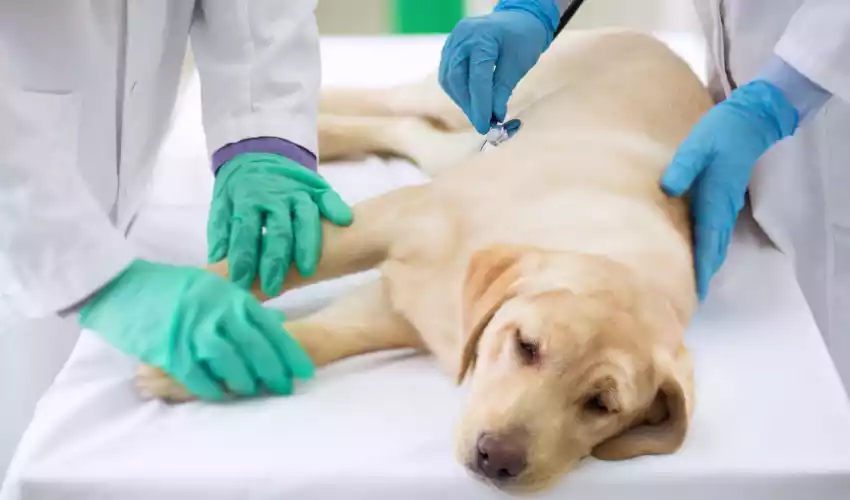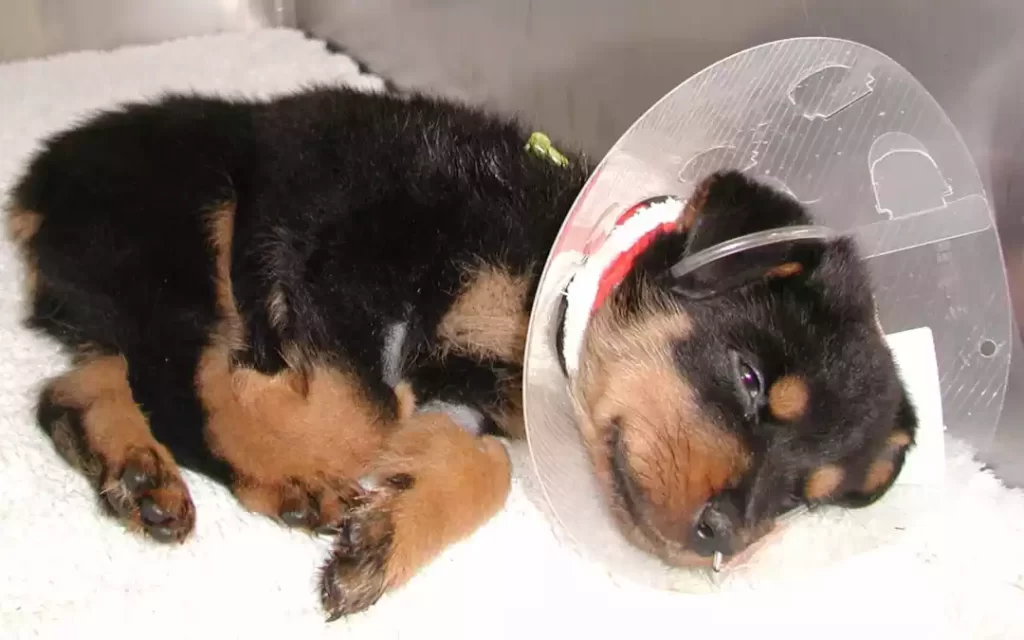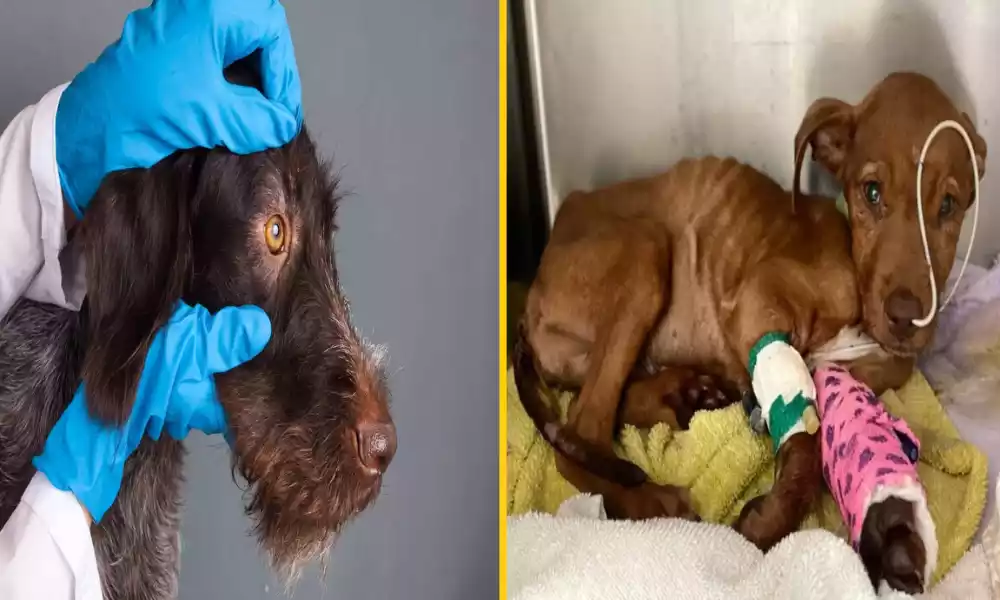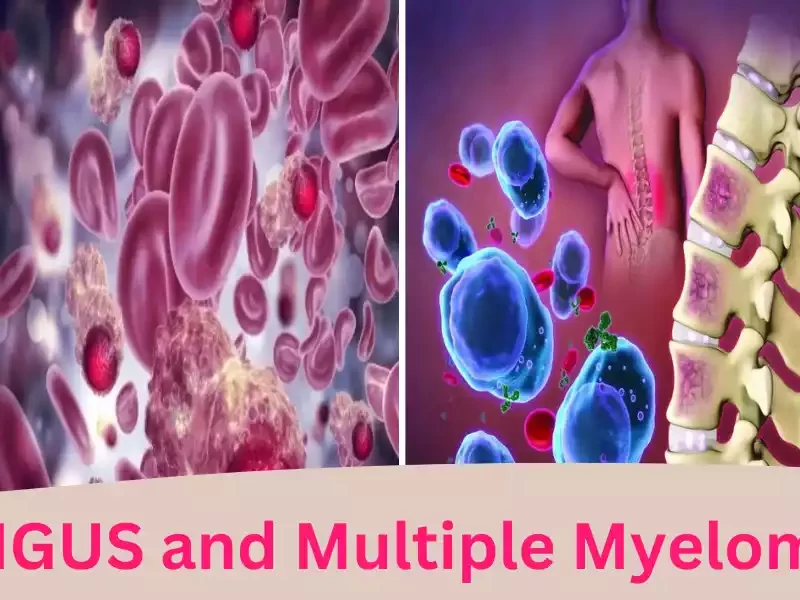Distemper and Parvovirus are two major viral diseases that can affect dogs. Distemper is an infection that affects all animals, while Parvovirus predominantly affects dogs. Both diseases have distinct symptoms that include respiratory, gastrointestinal, as well as neurological symptoms, whereas parvovirus typically causes serious gastrointestinal problems.
The virus spreads via the air, whereas parvovirus can be transmitted by contact with feces that are contaminated. A timely vaccination plays an essential role in preventing the spread of these illnesses.
Early detection and a proper vet’s treatment are crucial for efficient treatment. Making sure that dogs are current on their vaccinations and ensuring they are properly groomed are crucial measures to safeguard our beloved pets from potentially life-threatening diseases.
What is Distemper?
Parvovirus particularly, Canine Parvovirus (CPV) is a highly transmissible disease that is common among dogs, especially adults, and children who haven’t been vaccination-free.

Distemper is a viral contagious disease that affects a variety of species of mammals including dogs. This is brought on by Canine Distemper Virus (CDV) and the symptoms of CDV can vary significantly.
The most common signs are respiratory problems such as sneezing and coughing, digestive issues like diarrhea and vomiting, and neurological symptoms such as seizures. The virus is spread by airborne particles that come from infected animals. Regularly scheduled veterinary examinations and timely vaccinations can help safeguard pets from the possibly fatal illness.
What is Parvovirus?
The virus is primarily affecting the gastrointestinal system and can cause severe symptoms like vomiting and diarrhea (often bloody) as well as lethargy and dehydration. The virus is transmitted through contact with feces contaminated by the virus and the environment is at an increased risk.

Because of its resiliency, this virus is able to remain for a prolonged time. A timely and thorough vaccination is essential to prevent Parvovirus. If your dog is showing signs immediately, veterinary care is required, since the illness can be fatal.
Treatment requires the administration of intravenous fluids for dehydration as well as medications to manage nausea and other infections. Clean living spaces ensuring good hygiene and adhering to an ongoing vaccination schedule are vital precautions to guard dogs against this deadly and possibly fatal virus.
Difference Between Distemper and Parvovirus
The key differences between Distemper and Parvovirus:
| Characteristic | Distemper | Parvovirus |
|---|---|---|
| Causative Agent | Canine Distemper Virus (CDV) | Canine Parvovirus (CPV) |
| Targeted Systems | Respiratory, Gastrointestinal, Nervous | Primarily Gastrointestinal |
| Transmission | Airborne, Direct Contact | Fecal-Oral Route, Contaminated Surfaces |
| Species Affected | Various Mammals, Including Dogs | Primarily Dogs |
| Symptoms | Respiratory distress, Gastrointestinal, Neurological | Severe Vomiting, Diarrhea, Dehydration |
| Severity | Prolonged illness, Fatal in severe cases | Rapid onset, Potentially Fatal |
| Duration | Lasts several weeks, May be prolonged | Acute phase (3-7 days), Recovery extends to weeks |
| Recovery | Variable, Long recovery in severe cases | Recovery takes weeks, Virus shedding post-recovery |
| Vaccination | Available, Crucial for prevention | Available, Key preventive measure |
Symptoms and Causes of Distemper and Parvovirus?
The signs and symptoms of Distemper and Parvovirus differ, which pose dangers for dogs. Distemper, which is caused by the distemper virus, is characterized by respiratory, digestive neurological, and respiratory symptoms. Transmission via air is very prevalent.
Parvovirus, which is primarily affected by the digestive system, can lead to extreme vomiting and diarrhea as well as the spread of the virus through feces that are contaminated. Both illnesses could be life-threatening.
What are the signs to watch out for and how the virus spreads are essential in identifying and preventing the spread of these diseases. Regularly scheduled vet visits along with vaccinations as well as responsible dog ownership all play crucial parts in protecting pets from the hazards associated with Distemper as well as Parvovirus.
How are Distemper and Parvovirus spread?
Dogs suffer from Distemper and Parvovirus. It’s like having the stomach bug or flu for these dogs. Imagine a dog that is sick and is sneezing or vomiting outside. Other dogs may be affected due to being close or in the same vicinity.
The disease can spread through air and excrement. But don’t worry. We can assist by shielding our pets from dogs that are sick and making sure they receive their vaccinations. They’re like shields for superheroes that protect our dogs from invisible diseases.
How long do Distemper and Parvovirus last?
1. Distemper Duration:
- Varied Length: The illness caused by Distemper can last for several weeks, sometimes up to 3-6 weeks.
- Prolonged Recovery: In severe cases, especially when the nervous system is affected, recovery might take longer.
- Potential Long-Term Effects: Some dogs might suffer long-term effects or complications even after recovery, especially neurological issues that can be permanent.
2. Parvovirus Duration:
- Quick Onset: Parvovirus can hit dogs suddenly and intensely.
- Acute Phase: The severe symptoms often peak within a few days, usually around 3-7 days.
- Extended Recovery: While the acute phase is short, recovery might take weeks, with dogs slowly regaining strength and health.
- Virus Shedding: Even after clinical recovery, some dogs might continue to shed the virus in their feces for a while, posing a risk to other dogs.
3. Severity and Recovery:
- Severity Varies: The severity of both illnesses varies among individual dogs. Young puppies and unvaccinated dogs might experience more severe symptoms.
- Vaccination Impact: Vaccinated dogs might have milder symptoms or recover more quickly if infected.
4. Veterinary Care and Support:
- Early Intervention: Seeking prompt veterinary care is crucial for better outcomes in both cases.
- Supportive Care: Treatment involves supportive measures such as fluid therapy, medications to manage symptoms, and hospitalization in severe cases.
How Distemper and Parvovirus Affect Unvaccinated Dogs.
If your dog isn’t vaccinated for Distemper and Parvovirus, they could be very difficult for the dog:
Distemper Trouble
- Full-Body attack: The effects of a cold can impact their breathing, stomach as well and brain.
- Lang Sickness: This can leave them sick for a lengthy period of time, and some dogs don’t recover fully.
Parvovirus Woes:
- Tummy Upset: Parvovirus typically affects the stomach, causing severe vomiting and diarrhea
- Quick and Durable: It comes on quick and can be hard on their tiny bodies.
Both Can Be Dangerous:
- No quick fix: Without vaccines, there’s not a quick solution to these diseases.
- Serious business: There is a chance that your pet will need lots of attention from the vet. And unfortunately, it could get too much.
Treatment Protocol for Distemper and Parvovirus
Distemper:
1. Isolate and Protect:
- Quarantine: Keep dogs with a virus away from other dogs.
- Limit contact: Reduce interactions to stop transmission.
2. Supportive TLC:
- Hydration: Drink fluids to fight dehydration.
- Nutritional boost: Make sure you have that you eat a balanced diet to build power.
- The Symptom Management Program: Medications that alleviate symptoms.
3. Hospital Haven:
- Intensive Care: Extreme cases could require professional care.
- Regular Monitoring: Monitor the temperature as well as overall well-being.
4. Vaccination Shield:
- Prevention Measures: Increase the number of vaccination routines.
- Timely Boosters: Make sure you keep your vaccinations current.
Parvovirus:
1. Isolation and Cleanliness:
- Strict Quarantine: Separate affected dogs to ensure their safety.
- Thoroughly Disinfection: Clean and disinfect the area thoroughly.
2. Compassionate Support:
- Fluid Heroics: Stop dehydration by taking intravenous fluids.
- Anti-nausea Magic: Medication to treat vomiting.
- Antibiotic Allies: Treat Secondary bacterial infections.
3. Hospital Oasis:
- Instant Care: Severe cases might require special care.
- Routine check-ups: Regularly monitoring of important indicators.
Preventive Measures: Strengthen the vaccination strategies.
Prevention Strategies for Distemper and Parvovirus
Vaccinate Your Pup:
- Make sure your dog receives their shots at the right time.
- Vaccination can be described as providing them with the ability to defend themselves against these diseases.
Keep Clean Spaces:
- Make sure you regularly clean your dog’s home.
Avoid Sick Buddies:
- Be sure to keep your dog away from dogs that are sick.
- Beware of contact with any unknown or unvaccinated dogs.
Regular Vet Check-ups:
- Make regular visits to the vet.
Hygiene Matters:
- Wash your hands after handling dogs.
- Hygiene is the best way to prevent the transmission of bacteria.
Responsible Pet Ownership:
- Be a responsible pet owner.
- Offer a balanced diet as well as an inviting, secure setting.
Similarities: Distemper vs Parvovirus
Here are some similarities between Distemper as well as Parvovirus:
- Viral Infections: The two Distemper as well as Parvovirus result from viruses that specifically affect dogs.
- Serious health threats: They are both serious and could be life-threatening for dogs, especially puppies, and adults who are not vaccinated.
- Highly Contagious: Both illnesses are transmissible to dogs and be spread quickly in places in which dogs are aplenty like parks, kennels, or shelters.
- Can be prevented by vaccination: Vaccination plays a vital role in preventing the spread of both Distemper and Parvovirus illnesses. Regular and timely vaccinations aid in building immunity
- Requires Veterinary Attention: Both diseases require prompt medical attention and treatment. A prompt intervention greatly increases the chance of a successful recovery.
- Similar Initial symptoms: Initially, both conditions may show similar symptoms, such as hunger loss as well as digestive problems that could cause diarrhea and vomiting.
Summary
The diseases of distemper as well as Parvovirus are serious illnesses that can affect dogs. The disease, which is caused by a virus that is contagious, causes digestive, respiratory neurological, and respiratory symptoms.
It can be spread via the air and could affect different mammals. Parvovirus is extremely contagious in dogs and is primarily a threat to the digestive tract that can trigger severe diarrhea and vomiting. The virus spreads through contact with feces contaminated by the virus. It is essential to get vaccinated to prevent these diseases. Early detection is essential for efficient treatment.



